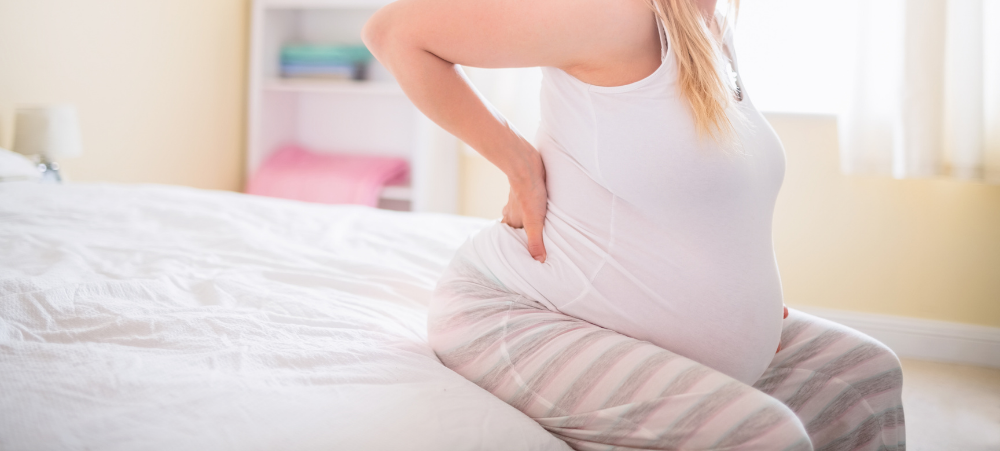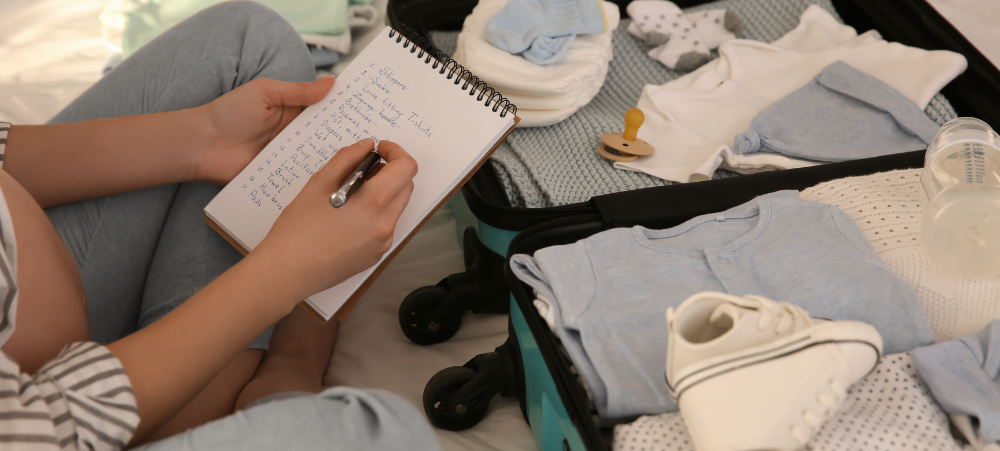Back pain is a common ailment during pregnancy. As many as 50 to 90% of women suffer some form of back or pelvic girdle pathology or ailment because of pregnancy. Pelvic girdle pain (PGP) is defined as pain or discomfort experienced in the lumbar spine, abdomen, pelvis and thigh areas. PGP is highly common in pregnancy and includes sciatica, pubic symphysis pain and round and broad ligament pain. If back and pelvic injury or pain is not managed correctly and addressed during pregnancy it can persist long after birth and has the potential to carry on throughout life.
Often the symptoms progress and lead to structural and biomechanics changes in the spine and pelvic regions. The causes of perinatal back pain include weight gain, balance and postural changes, hormonal joint and ligament effects, weakened abdominal muscles and pre-existing spinal pathology.
The increasing weight of the pelvic and abdominal areas places a large force on the spinal, sacral, pelvic and lower limb joints. This weight distribution shift-causes a change in the body’s centre of gravity and these joints need to compensate to achieve postural steadiness. The load placed on the spinal joints, muscles and ligaments can be damaging and pain and pathology may develop where it never did before. This force also exacerbates any existing pathology or previous injury sustained by the spine. Weight gain during pregnancy also negatively affects the optimum functioning of these joints placing them under further strain.
During pregnancy balance is affected. The body’s centre of gravity is shifted due to the forward pull of the increasingly heavy abdomen. Adjustment of posture and limb orientation is needed to accommodate the changing weight distribution to achieve effective balance. The postural changes required to maintain balance can lead to a varied number of spinal ailments as the upper back tends to become rounded, the chin pokes forward and the lower back extends, pushing the abdomen out even further. Poor posture then weakens the muscles of the upper back and possibly causing thoracic, neck and shoulder pain, as well as headaches. The lower back may suffer the same result with pain in the lumbar, sacral and pelvic region, sciatica and neural and muscular strain. Weight gain, posture and balance changes can also lead to falling and mechanical injury to the spine.
The pregnant body secretes hormones which prepare the body for the growing foetus as well as the impending delivery. Relaxin is a hormone secreted that softens the ligaments, tendons, cartilage, muscles and joints in the body which allow for the stretching of the pelvic joints and hips during delivery. Relaxin also relaxes the smooth muscle in the uterus to allow for growth and expansion. In turn it influences the entire body causing cartilage and ligaments to soften, muscles to relax and joints therefore become more prone to injury and pain. Joints in the spine and pelvis become increasingly vulnerable to injury and pain as their stability is further compromised due to this effect of relaxin. The hormonal effects of relaxin as well the weight of the abdominal and pelvic contents can lead to varied degrees of incontinence, constipation and haemorrhoids.
Due to the expanding uterus and the growth of the abdominal and pelvic areas weakening of the abdominal muscles tends to occur as they need to stretch to accommodate this growth. The core abdominal muscles, which are responsible for support, strength and correct biomechanics are weakened too. This muscular structure becomes compromised during pregnancy which in turn can allow for injury and pain as their protective function has been diminished. Diastases recti, where the abdominal muscles separate from each other, may occur in severe conditions.
Sciatica, pubic symphysis pain and diastase’s, facet joint pathology, sacroiliac joint dysfunction, muscular spasm, spinal disc and neural irritation are a few manifestations due to the above-mentioned factors. These need to be effectively managed to reduce discomfort during and after pregnancy as well as any long-term negative spinal and pelvic effects after birth. Treatment options include correcting poor biomechanics, exercise, muscle strengthening and release, joint mobilisations and infiltrations, postural adjustment, pain management modalities and support bracing. The goal is to provide support and structure to this vulnerable area, to reduce discomfort, pain and pathology and promote a healthy back in later life.
The BellyUp maternity support brace is designed to alleviate the majority of the above-mentioned symptoms by providing support of the heavy abdomen, back and pelvis. The female body undergoes a vast amount of physical change during pregnancy and the back and pelvic areas are often left in a destabilised state due to the preparation for birth. Bracing allows for increased stability, support and function during a time when the female body requires it the most. Bracing with a product like the BellyUp will minimise injury and pathology caused by pregnancy, which in turn will reduce back and pelvic symptoms experienced by women later in life.
Julie Klinkert (BSc Physio (WITS))
- Back and Pelvic Pathology in Pregnancy – the Need for Support - March 14, 2024
- Does a Belly Binder really work? - November 20, 2023
- WHAT IS POST BIRTH BELLY BINDING - January 29, 2019





